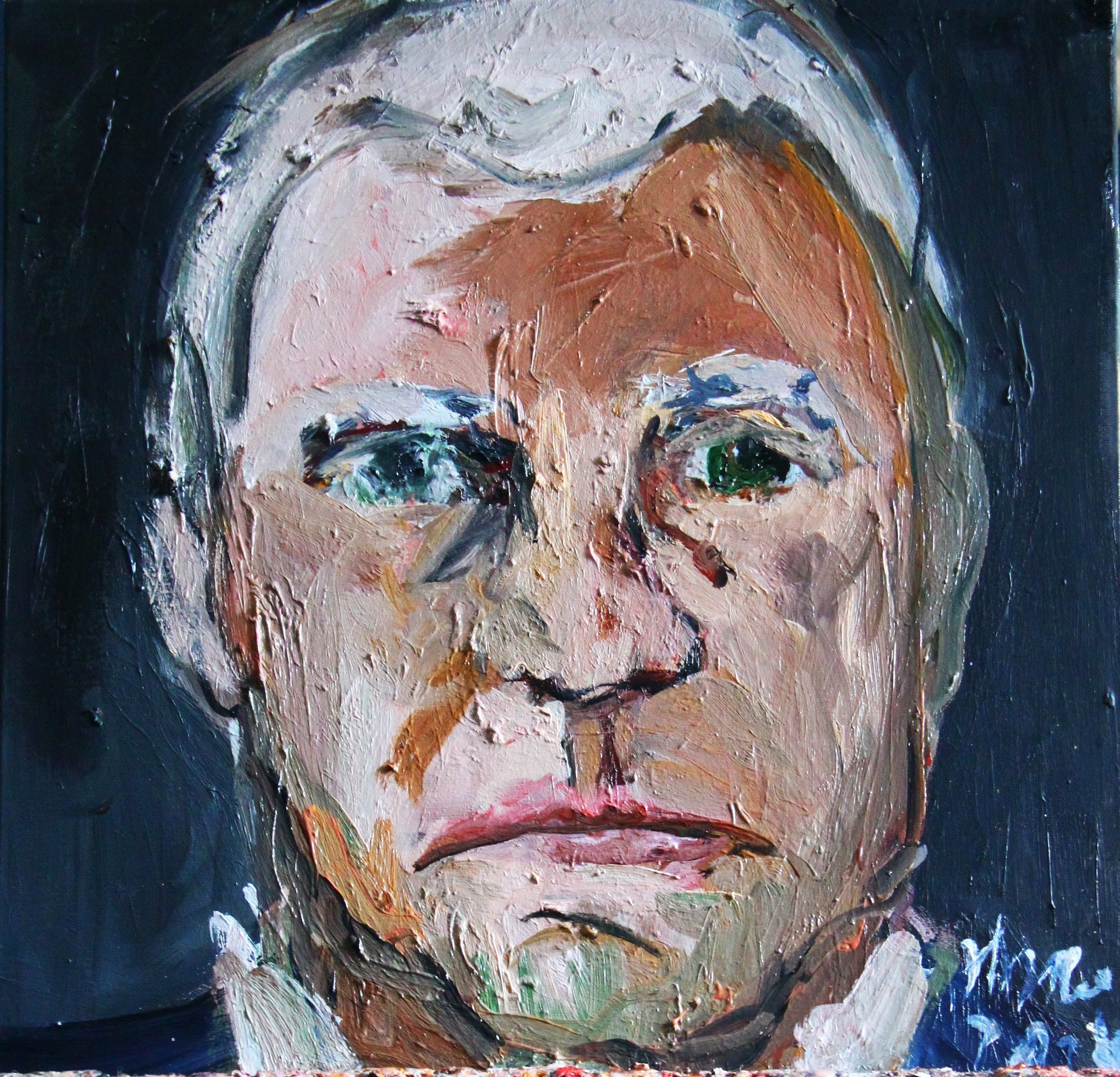María Aparici
Visceral Expressionism: The Chaotic Beauty and Feminine Defiance in Maria Aparici’s Art
Maria Aparici’s work explodes with a visceral intensity that places her squarely in a lineage of bold expressionists. Like the works of Willem de Kooning and Francis Bacon, Maria Aparici’s paintings delve into the depths of the human psyche, pulling twisted and distorted figures from the artist’s inner world and presenting them with a raw honesty that is as unsettling as it is mesmerizing. Her art navigates the precarious balance between abstraction and figuration, presenting images that seem caught between clarity and chaos, much like the tormented figures in Bacon’s work or the unrestrained brushstrokes in de Kooning’s.
One of the defining characteristics of Maria Aparici’s style is her treatment of the female form. The figures in her compositions are fragmented and reassembled, embodying a sense of dislocation and unrest that speaks to her personal statement of “vengeance to the decadent hidden morality” that causes her distress. This is a powerful mission, and it is realized through her deliberate use of distortion and abstraction. The women in her paintings are powerful yet elusive, caught in a web of forces that seem both external and internal. In this way, Maria Aparici mirrors the themes in the work of Louise Bourgeois, another artist known for depicting women through an expressionistic and often unsettling lens.
Maria Aparici’s use of color is aggressive and unapologetic. The vivid reds, contrasting whites, and dark lines that streak across her canvases create a sense of dynamic tension, as if the figures are simultaneously emerging from and retreating into the layers of paint. This turbulent use of color and texture recalls the bold palette of Chaim Soutine, where color is less about representation and more about evoking raw emotion. In her paintings, color takes on a symbolic role, delineating not only physical forms but also the psychological and emotional boundaries of her subjects.
In terms of form, Maria Aparici’s figures are angular, their limbs and torsos sometimes distorted beyond recognition, and yet they retain an undeniable energy and presence. Her brushwork is urgent, almost violent, with thick layers of paint applied in rapid, gestural strokes. This technique gives her work a sense of immediacy, as if the paintings are documents of a momentary burst of energy—a reflection of her own description of art as “an outburst of forces.” Her compositions, though abstract, are carefully structured, creating a dialogue between form and space that draws the viewer’s eye across the canvas in a restless search for coherence amid the apparent chaos.
Comparing Maria Aparici to other expressionist painters such as Egon Schiele and Oskar Kokoschka highlights her approach to the human body as a vessel of tension and contradiction. Schiele’s figures, for example, are often contorted and expressive, revealing a fascination with the physicality of the body as well as its vulnerabilities. Similarly, Maria Aparici’s women are embodiments of inner conflict, their forms stretched and pulled as if under the weight of societal and personal pressures. Her work suggests a critique of the ways in which women’s bodies are viewed, consumed, and constrained, echoing themes found in feminist art yet expressed through a uniquely abstract lens.
Maria Aparici’s paintings also hint at a narrative dimension, albeit a fragmented one. The figures are often set in ambiguous spaces, surrounded by abstract forms that suggest both confinement and freedom. This approach recalls the work of Jean-Michel Basquiat, who used similar techniques to place his figures within a dense, symbolic landscape. In Maria Aparici’s case, the landscape is one of psychological turmoil, a space where the boundaries between self and society are constantly blurred and questioned.
The recurring theme of “enchanted recurrence” in her paintings can be seen as a reflection of an obsessive drive to confront and reconfigure her subjects. Like Bacon’s repeated studies of Pope Innocent X, Maria Aparici’s revisitations of distorted female figures serve as a way of interrogating and re-imagining their identity and agency. This cyclical exploration allows her to delve deeper into her chosen themes, each iteration adding new layers of complexity to her portrayal of womanhood.
Maria Aparici’s work stands as a compelling exploration of identity, morality, and the female form. Her paintings, with their distorted figures, chaotic compositions, and striking use of color, resonate with a raw emotional power that forces the viewer to confront uncomfortable truths. She is an artist unafraid to engage with the darker aspects of human experience, and her work is a testament to the potential of abstract expressionism to communicate complex ideas and emotions. Maria Aparici’s art is challenging and provocative, a reflection of her own inner struggles and a critique of societal norms. In this way, she carries forward the legacy of artists like de Kooning and Bacon, while carving out a space that is distinctly her own. Her art is, as she describes, a methodical and dialectical coupling of forms—a powerful reminder of the transformative potential of creative expression.
Varias Donas 2024,O/C. 146 x 130 cm
El Gallinero, 2024.O/C 146 x 114 cm
La Hurraca , 2024 , O/C 116 x 89 cm
Kamala ,2024. O/C 1146 x 114 cm
Billie Eilish, 2024. O/C 170 x 65 cm
Taylor Swift, 2024. O/C 170 x 65 cm
Larry Gagosian, 2024. O/C 40 x 40 cm
Melania Trump ,2024 . O/C 40x 40 cm
OLÉ. 2024. O/C 146 x 114 cm











